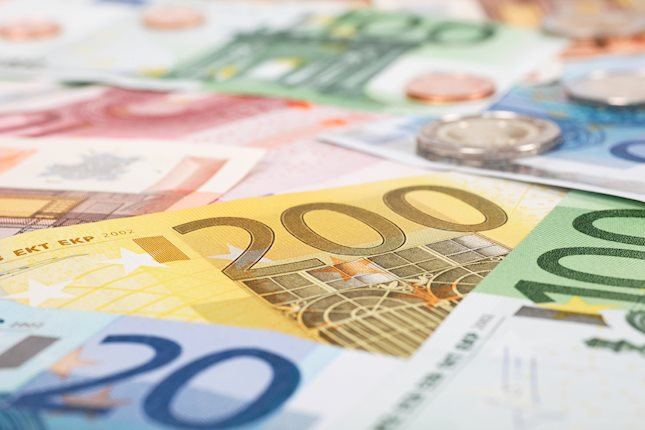- Gold price remains under heavy selling pressure amid the continuation of the Trump trade.
- The optimism over stronger US economic growth lifts the USD to a fresh YTD top on Thursday.
- Rising US bond yields also contribute to driving flows away from the non-yielding yellow metal.
Gold price (XAU/USD) touches its lowest level since September 19, around $2,550 area during the early part of the European session on Thursday. The US Dollar (USD) buying remains unabated in the wake of optimism over the expected expansionary policies by US President-elect Donald Trump. This, in turn, is seen as a key factor dragging the commodity lower for the fifth successive day.
Meanwhile, Trump's plans to hike tariffs on imports could accelerate inflation and force the Federal Reserve (Fed) to pause its easing cycle. Moreover, the US inflation figures released on Wednesday pointed to slower progress toward bringing prices down. This remains supportive of elevated US Treasury bond yields and contributes to driving flows away from the non-yielding Gold price.
Gold price bears maintain their dominant position amid broad-based USD strength and rising US bond yields
- The US Bureau of Labor Statistics reported on Wednesday that the headline US Consumer Price Index (CPI) rose 0.2% in October and by 2.6% over the last twelve months.
- The core gauge – which excludes the more volatile food and energy categories—increased by 0.3% last month and by 3.3% as compared to the same time period last year.
- The data reaffirmed market bets that the US Federal Reserve would deliver a third interest rate cut in December against the backdrop of a softening labor market.
- According to CME Group's FedWatch Tool, the probability of another 25-basis-points rate cut at the next FOMC meeting shot to over 80% from less than 60% on Tuesday.
- Commenting on the report, Dallas President Lorie Logan said that the central bank has made a great deal of progress bringing down inflation, but should proceed cautiously.
- St. Louis Fed President Alberto Musalem noted that the risk of inflation moving higher has risen and that sticky inflation makes it difficult for the central bank to continue to ease rates.
- Kansas Fed President Jeffrey Schmid made a rare appearance and said it remains to be seen how much more the US central bank will cut rates, and where they may settle.
- US President-elect Donald Trump's pledges of tax cuts and increased tariffs on imports could accelerate inflation, limiting the scope for the Fed to cut rates going forward.
- The Trump trade optimism keeps the yield on the 10-year US government bond elevated near a multi-month top and lifts the US Dollar to the highest level since November 2023.
- Thursday's US economic docket features the release of the usual Weekly Initial Jobless Claims and the Producer Price Index, ahead of Fed Chair Jerome Powell's appearance.
Gold price could pause for breather near the $2,542-2,538 confluence support, remains vulnerable
From a technical perspective, the overnight breakdown below the $2,600 mark, which coincided with the 38.2% Fibonacci retracement level of the June-October rally, was seen as a fresh trigger for bearish traders. This, along with negative oscillators on the daily chart, suggests that the path of least resistance for the Gold price remains to the downside and supports prospects for a fall towards the $2,542-2,538 confluence support. The said area comprises the 100-day Simple Moving Average (SMA) and the 50% Fibo. level, which if broken will set the stage for an extension of the recent sharp pullback from the all-time peak and expose the $2,500 psychological mark.
On the flip side, attempted recovery moves might now confront resistance near the Asian session high, around the $2,580 area, ahead of the $2,600 round figure. A sustained strength beyond the latter might prompt a short-covering rally towards the $2,630-2,632 static barrier, which if cleared should pave the way for a move towards the next relevant hurdle near the $2,660 region.
Fed FAQs
Monetary policy in the US is shaped by the Federal Reserve (Fed). The Fed has two mandates: to achieve price stability and foster full employment. Its primary tool to achieve these goals is by adjusting interest rates. When prices are rising too quickly and inflation is above the Fed’s 2% target, it raises interest rates, increasing borrowing costs throughout the economy. This results in a stronger US Dollar (USD) as it makes the US a more attractive place for international investors to park their money. When inflation falls below 2% or the Unemployment Rate is too high, the Fed may lower interest rates to encourage borrowing, which weighs on the Greenback.
The Federal Reserve (Fed) holds eight policy meetings a year, where the Federal Open Market Committee (FOMC) assesses economic conditions and makes monetary policy decisions. The FOMC is attended by twelve Fed officials – the seven members of the Board of Governors, the president of the Federal Reserve Bank of New York, and four of the remaining eleven regional Reserve Bank presidents, who serve one-year terms on a rotating basis.
In extreme situations, the Federal Reserve may resort to a policy named Quantitative Easing (QE). QE is the process by which the Fed substantially increases the flow of credit in a stuck financial system. It is a non-standard policy measure used during crises or when inflation is extremely low. It was the Fed’s weapon of choice during the Great Financial Crisis in 2008. It involves the Fed printing more Dollars and using them to buy high grade bonds from financial institutions. QE usually weakens the US Dollar.
Quantitative tightening (QT) is the reverse process of QE, whereby the Federal Reserve stops buying bonds from financial institutions and does not reinvest the principal from the bonds it holds maturing, to purchase new bonds. It is usually positive for the value of the US Dollar.
Information on these pages contains forward-looking statements that involve risks and uncertainties. Markets and instruments profiled on this page are for informational purposes only and should not in any way come across as a recommendation to buy or sell in these assets. You should do your own thorough research before making any investment decisions. FXStreet does not in any way guarantee that this information is free from mistakes, errors, or material misstatements. It also does not guarantee that this information is of a timely nature. Investing in Open Markets involves a great deal of risk, including the loss of all or a portion of your investment, as well as emotional distress. All risks, losses and costs associated with investing, including total loss of principal, are your responsibility. The views and opinions expressed in this article are those of the authors and do not necessarily reflect the official policy or position of FXStreet nor its advertisers. The author will not be held responsible for information that is found at the end of links posted on this page.
If not otherwise explicitly mentioned in the body of the article, at the time of writing, the author has no position in any stock mentioned in this article and no business relationship with any company mentioned. The author has not received compensation for writing this article, other than from FXStreet.
FXStreet and the author do not provide personalized recommendations. The author makes no representations as to the accuracy, completeness, or suitability of this information. FXStreet and the author will not be liable for any errors, omissions or any losses, injuries or damages arising from this information and its display or use. Errors and omissions excepted.
The author and FXStreet are not registered investment advisors and nothing in this article is intended to be investment advice.
Recommended content
Editors’ Picks

EUR/USD stabilizes near 1.0550, looks to post weekly gains
EUR/USD continues to fluctuate in a tight channel at around 1.0550 in the American session on Friday as trading action remains subdued with US financial markets heading into the weekend early. The pair looks to end the week in positive territory.

GBP/USD loses traction, retreats below 1.2700
After climbing to its highest level in over two weeks at 1.2750, GBP/USD reverses direction and declines to the 1.2700 area on Friday. In the absence of fundamental drivers, investors refrain from taking large positions. Nevertheless, the pair looks to snap an eight-week losing streak.

Gold pulls away from daily highs, holds near $2,650
Gold retreats from the daily high it set above $2,660 but manages to stay afloat in positive territory at around $2,650, with the benchmark 10-year US Treasury bond yield losing more than 1% on the day. Despite Friday's rebound, XAU/USD is set to register losses for the week.

Bitcoin attempts for the $100K mark
Bitcoin (BTC) price extends its recovery and nears the $100K mark on Friday after facing a healthy correction this week. Ethereum (ETH) and Ripple (XRP) closed above their key resistance levels, indicating a rally in the upcoming days.

Eurozone PMI sounds the alarm about growth once more
The composite PMI dropped from 50 to 48.1, once more stressing growth concerns for the eurozone. Hard data has actually come in better than expected recently – so ahead of the December meeting, the ECB has to figure out whether this is the PMI crying wolf or whether it should take this signal seriously. We think it’s the latter.

Best Forex Brokers with Low Spreads
VERIFIED Low spreads are crucial for reducing trading costs. Explore top Forex brokers offering competitive spreads and high leverage. Compare options for EUR/USD, GBP/USD, USD/JPY, and Gold.